Antiphospholipid Syndrome(APLS) in a man
Umarani1,*, Vijayalakshmi2
1Assitance Nursing Superintendent, Kauvery Heartcity, Trichy, India
2Non Critical Ward Incharge, Kauvery Heartcity, Trichy, India
*Correspondence: nursing.heartcity@kauveryhospital.com
Present History
The patient had complaints of breathing difficulty and cough since last 3 days.
Case Presetation
The patient had type 2 diabetic mellitus and hypothyroidism x 15 years, under regular treatment. She also had a past history of deep vein thrombosis and phlebitis, left leg (2017), a history of pulmonary thrombo-embolism in 2020, and was on acitrom.
Investigations
- ECG
- ECHO cardiogram
- CT Pulmonary angiogram
- Doppler
- Antinuclear antibody test
- Anticardiolipid IgG and IgM
- Lupus anticoagulant
ECG
Showed P Pulmonale and borderline Rt Axix deviation, suggesting Pulmonary Hypertension
This was corroborated by Echo and Pulmonary angiogram
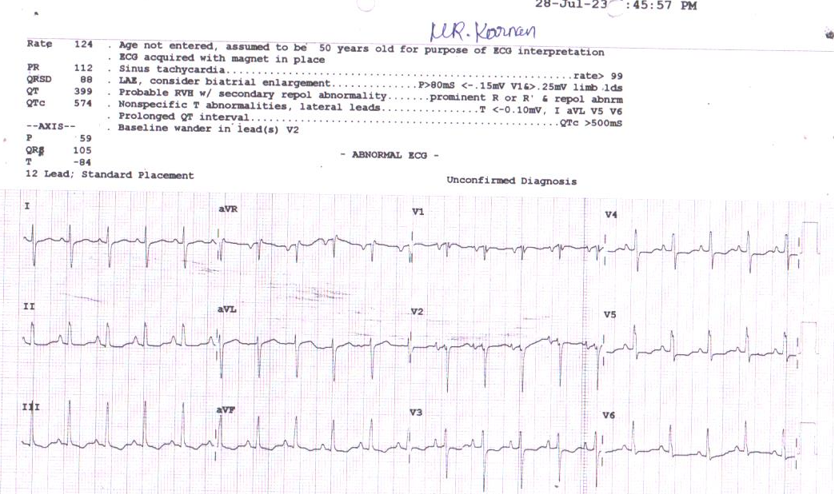
ECHO Report
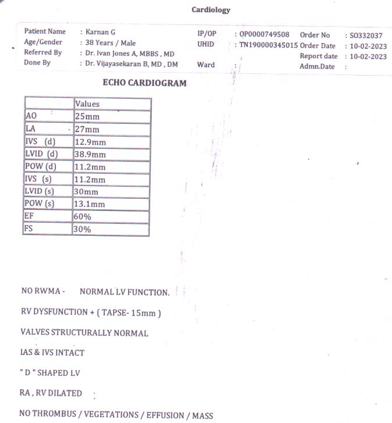
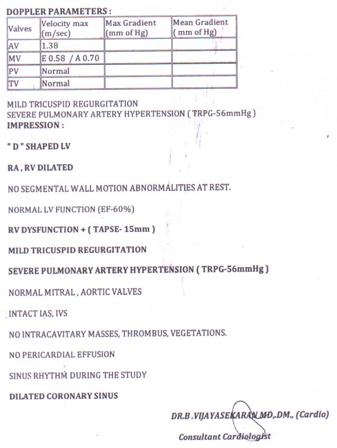
CT pulmonary angiogram
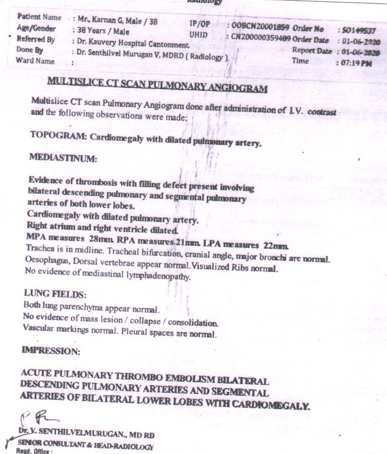
Venous Doppler
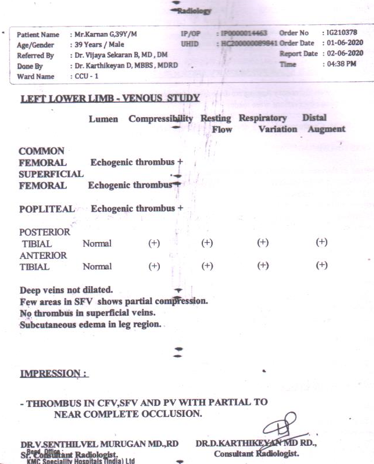
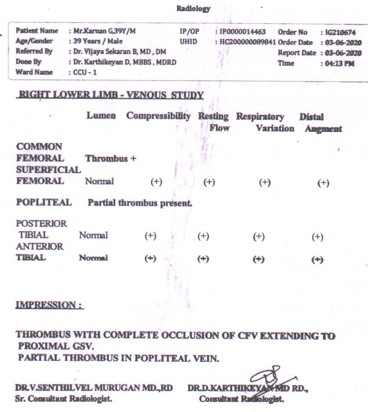
Anti Nuclear Antibody Test
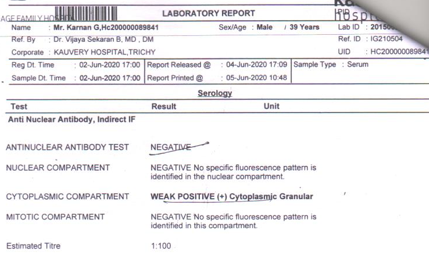
Lupus Anticoagulant Report
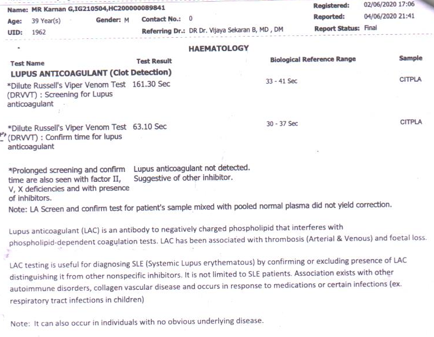
Anti Cardiolipin Report
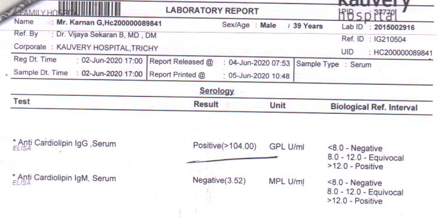
Diagnoses
- Type II Diabetes Mellitus
- Hypothyroidism
- Bilateral Deep Vein Thrombosis (confirmd by Doppler)
- Pulmonary Thromboembolism(confirmed by CT Pulmonary Angio )
- Anti-phospholipid syndrome (Anti-Cardiolipim Ig G + Anticardiolipin Positivity is highly associated with Antiphospholipid Syndrome).
Management
The main treatment for pulmonary thrombo embolism is anticoagulation. Depending on the severity of the clot and its effect on other organs such as the heart, patient may have to also undergo thrombolytic therapy surgery or interventional procedure to improve blood flow in the pulmonary arteries.
Regular PT-INR evaluation and continuation of the anticoagulant medicine is advised for Tab. Acitrom, and the patient is monitored for any episodes of bleeding.
The management of diet ( to avoid Vit K rich grees) is very clearly explained to patients and relatives.
Brief review of literature
Pulmonary Thromboembolism
Acute pulmonary thrombo embolism is a blockage of the pulmonary artery. Most often the condition is result from a blood clot that forms in another part of the body (Deep Vein Thrombosis or DVT) and travels to the lungs.
APLA
A disorder in which the immune system mistakenly attacks normal proteins in the blood. Antiphospholipid Syndrome can cause blood clots to form within the arteries, veins and organs.
Nursing Management
- Monitored vital signs, maintained provided a comfortable position, and provided safety measures.
- To administered the medication correct time and correct dose given to the patient
- To maintained the intake and output chart and weight monitoring daily.
- To monitored the patient for any allergic reaction to medicine side effects.
- Diet pattern explained to patient and patient relative (No vitamin K diet).
- Semi-fowler position with pillow supported to prevent breathing difficulty.
- Health remote the patient and regularly monitored the blood tests.
- Explained to the patient to avoid the heavy work and stain.
- To provide the psychological support
- To educate the regular follow-up care and continue the take rest.
- To maintain personal hygiene and avoid to air pollution.
- Advised to take regular follow-up care.
Self-Care
Depending on the treatment plan for antiphospholipid syndrome, there are other steps the patients are advised to protect their health. If they are on blood-thinning medications, they are advised to take extra care to keep from injury to avoid bleeding. They are advised to avoid contact sports or other activities that could cause bruising or injury or cause them to fall. Use a soft toothbrush and waxed floss, and shaving with an electric razor are recommended, and to take extra care when using knives, scissors and other sharp tools.
Safe dietary choice
Vitamin K can lessen the effectiveness of acitrom (Acinocumerol), so patients need to avoid eating large amounts of vitamin K-rich foods such as avocado, broccoli, brussels, sprouts, cabbage, leafy greens and garbanzo beans.
Plan
CT pulmonary angiogram follow-up to rule out chronic thromboembolic pulmonary hypertension which may need a pulmonary endarterectomy.
Conclusion
APLA in men is rare, hence we report this.
We received a good outcome because of our effective treatment and also received great blessings from the patient, with his smiling face. Happily, he returned to his home.

Ms. Umarani
Assistant Nursing Superintendent

Ms. G. Vijayalakshmi
Nursing Incharge
